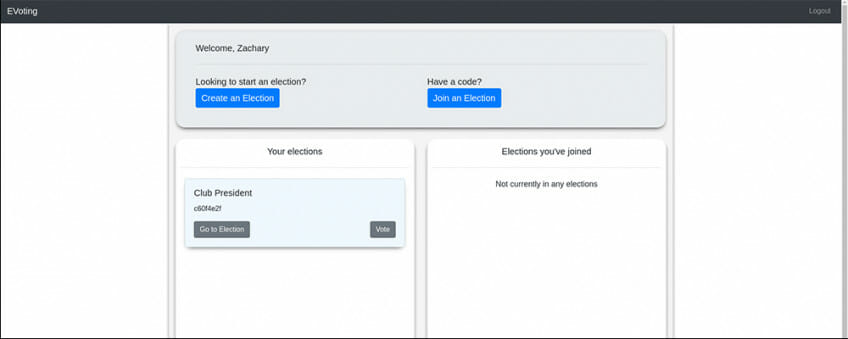Electronic Voting
Computer science major investigated the cryptographic techniques necessary to run a secure electronic election.
About the Project
Overview
As a semester-long independent project, Mark Dalton investigated the cryptographic techniques that are utilized to construct a secure electronic election. This culminated in the development of a website that allows a fair electronic election to be conducted.
The properties that are preserved by the system are:
- correctness
- verifiability and auditability
- anonymity of voters
- uniqueness (one vote per voter; requires authentication)
- non-coercibility
The cryptographic tools that had to be learned included: zero-knowledge proofs, homomorphic encryption and mix-nets.
Student
Mark Dalton ’20, Computer Science
Instructors
Zach Kissel ’05, Associate Professor, Computer Science
Assignment Type
Independent study project
Languages/Code/Programs/Technology Used
- The protocol was implemented in Java using Spring
- The web technologies used, beyond Spring, were JavaScript and HTML
- Authentication was done using the OAuth.


